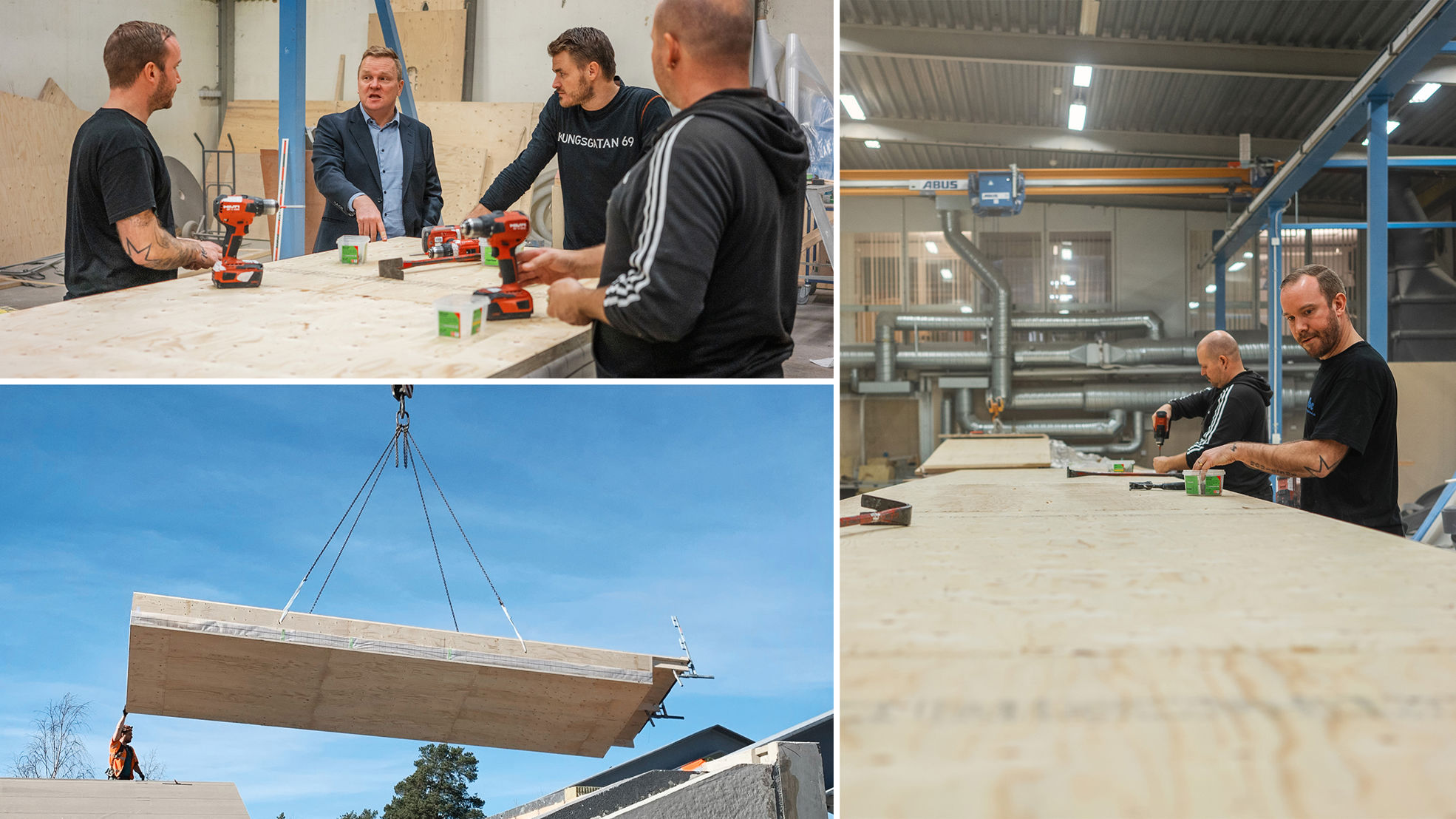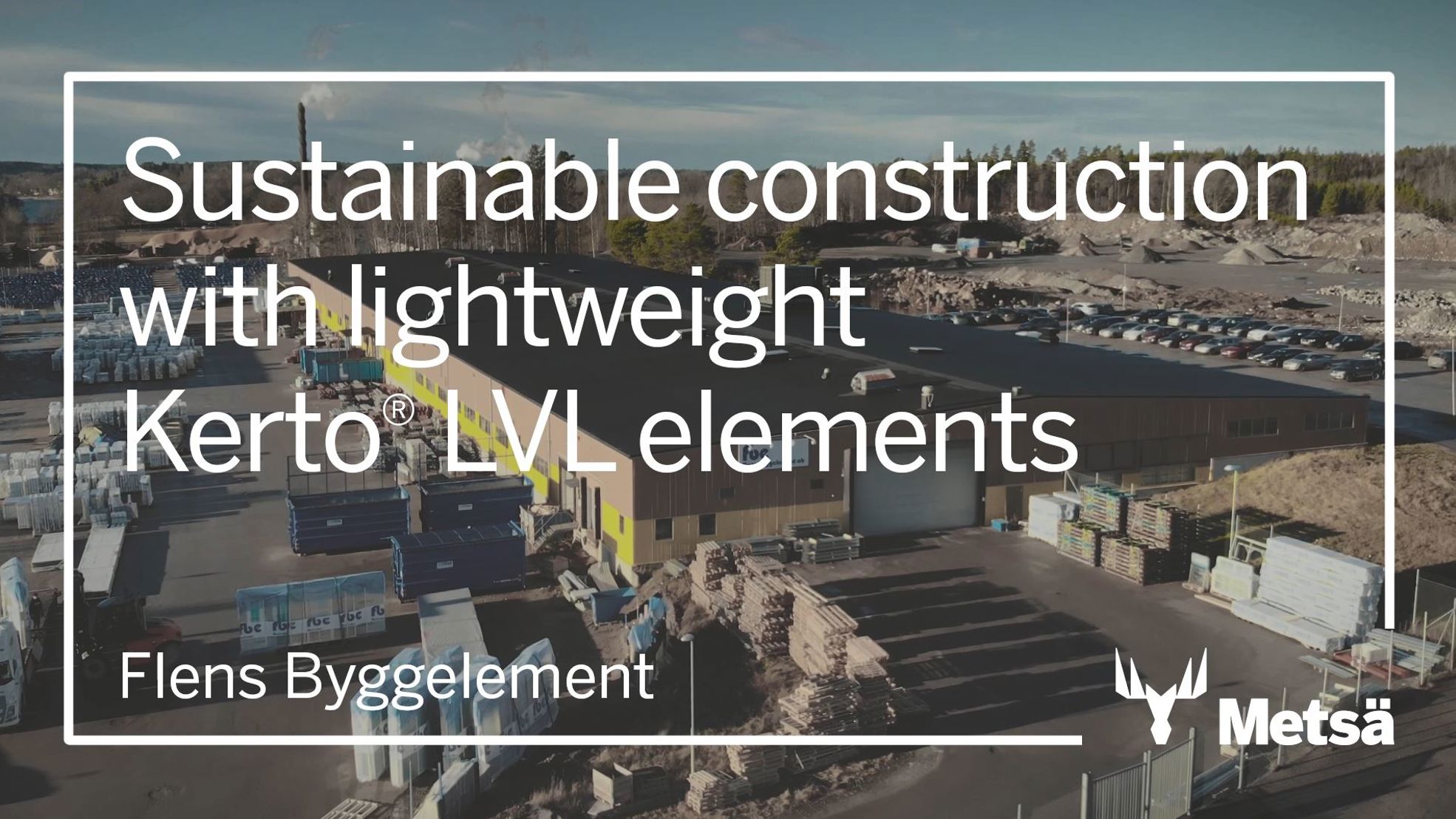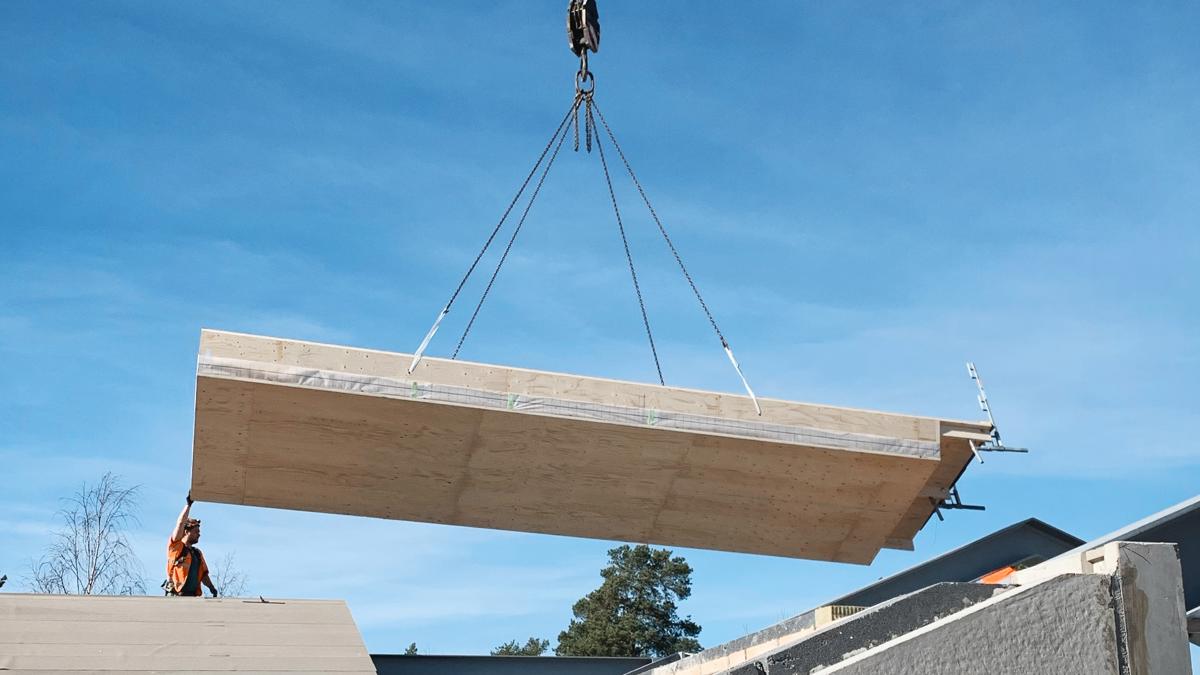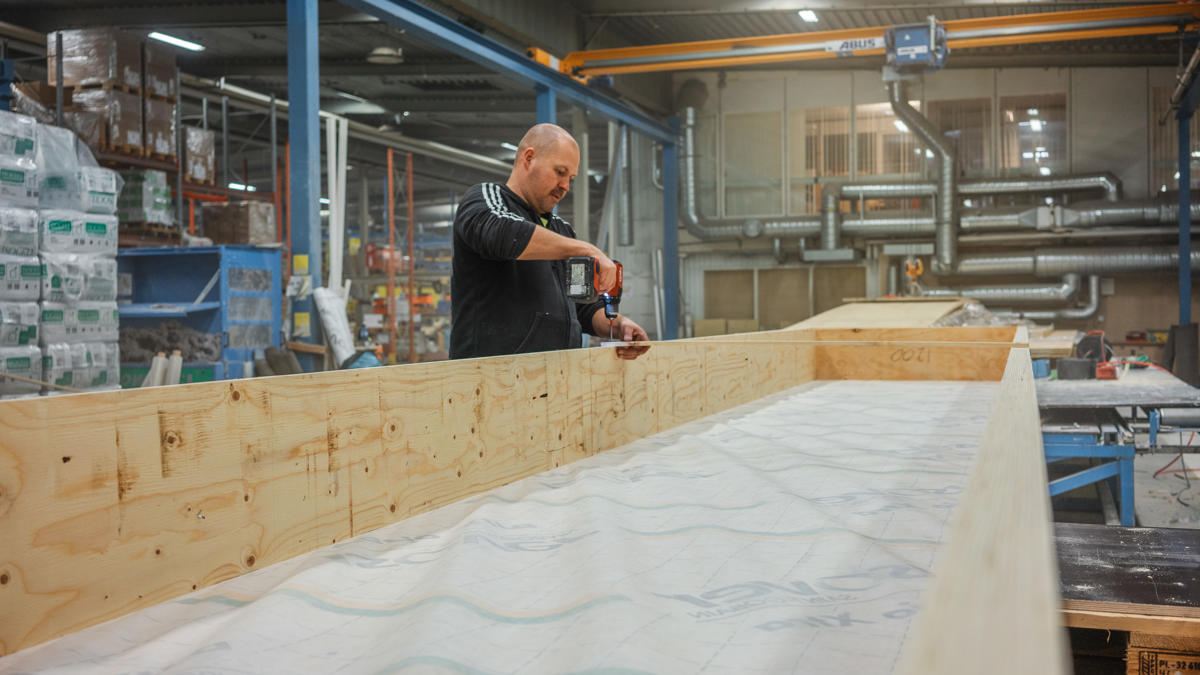Prefabricated wooden elements make the construction industry more efficient
Flens Byggelement focuses on streamlining the construction process and making it more efficient. In Rickard Brännman’s opinion, prefabricated wooden elements are part of the solution.
“Using wood in construction offers us great flexibility concerning the products we supply to the construction market, since it enables a more tailored and solutions-oriented approach with customers,” he explains.
A focus on prefabricated elements ensures that Flens Byggelement’s customers get higher quality products and have greater control over the products. It also makes processes more efficient. When constructing on site, builders may end up spending more than half of their working hours on matters unrelated to the actual construction. They may find themselves repairing defects detected only after construction has been completed.
“Such defects and inefficiency can be avoided by using prefabricated elements, manufactured in an indoor environment that can be controlled, instead of building everything outdoors at the construction site,” says Rickard Brännman.
Kerto® LVL has unique properties
Metsä Wood supplies Kerto LVL products to Flens Byggelement. Kerto LVL is an engineered product made by gluing several layers of three-millimetre-thick veneers to create a lightweight product that is fast to build with and sustainable from the climate perspective. Using Kerto LVL in everything from new buildings to renovation and repair helps Flens Byggelement meet customer needs.
“Specific properties, such as long spans, low U values and low deflection, are often sought, and Kerto LVL is a good choice in this respect,” says Rickard Brännman.
The strength and stiffness properties of Kerto LVL make it possible to build floor and roof elements with long spans and an optimal amount of wood. Lightweight Kerto LVL also reduces the weight of transports to construction sites, which is better for the climate.
“What is more, Kerto LVL elements are loaded into lorries in the correct order of assembly, enabling the construction company to simply lift the topmost element, put it in place and then do the same for the following ones,” says Brännman.



